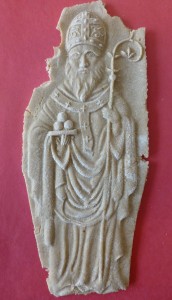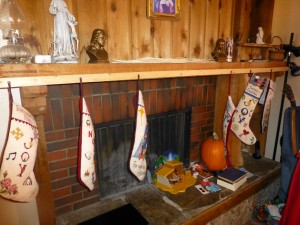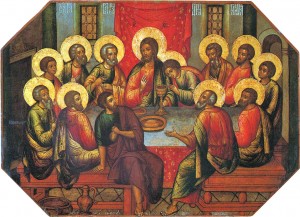The Breviary begins today with this invitatory: “Come let us worship the newborn Christ, who has given the glorious crown to St. Stephen.” In the book of Acts, where we read about Stephen’s martyrdom, nothing suggests a connection to the newborn Christ in particular, but the fact that his feast day has been right after Christmas since the liturgical year first took shape led to the tradition that the three days after Christmas bring three “companions of Christ” around the crib to adore the infant God.
The three companions, according to a medieval commentary, represent the three kinds of martyrs. First we have Stephen, who was willing to die for Christ and was in fact killed; tomorrow we have St. John, who was willing to die for Christ but was not in fact killed; and then we have the Holy Innocents, who were in fact killed for Christ but were too young to be willing. Today’s invitatory connects the newborn Christ to the first kind of martyr. Tomorrow’s invitatory turns to the default invitatory used for every Apostle, but the invitatory for the Holy Innocents sounds like today’s: “Come, let us worship the newborn Christ, who crowns with joy these children who died for him.”




